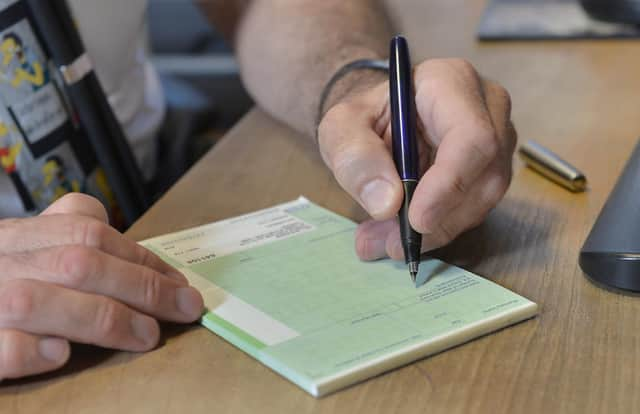Average north central London GP looking after hundreds more patients as doctor workforce shrinks


The average north central London GP has hundreds more registered patients than in 2015, new analysis suggests – as the local doctor workforce shrinks.
The Royal College of GPs said action is needed to recruit more doctors and keep them in the profession longer as patient lists become unsustainable.
Advertisement
Hide AdAdvertisement
Hide AdAnalysis of NHS data shows the number of registered GP patients in the NHS North Central London Integrated Care Board increased from 1,520,000 people in September 2015 to 1,804,000 in December.
Meanwhile, the full-time and fully qualified GP workforce in the area fell from 745 doctors to 737 over the same period.
It meant the patient list of the average north central London GP grew by 408 people to a total of 2,447 patients last year – an increase of 20%.
In 2015, former Health Secretary Jeremy Hunt pledged to recruit 5,000 more GPs by 2020. However, the number of fully qualified doctors at GP surgeries in England has fallen by 1,877.
Advertisement
Hide AdAdvertisement
Hide AdYet across England, the number of registered patients increased by 11%.
With the rise in patients far outstripping change in GP numbers, it meant the average GP's patient list grew by 18%.
Professor Kamila Hawthorne, chair of the RCGP, said: "The latest available figures show that GPs and our teams are working harder than ever to make sure patients receive the care and services they need under difficult circumstances.
"The data makes clear that the need for our care continues to spiral, yet we still have fewer qualified, full-time equivalent GPs than before the pandemic – and we need practical action to address this."
Advertisement
Hide AdAdvertisement
Hide AdShe added the increasing demand for GP services and overall fall in fully qualified doctors has led to the average patient list "becoming unsustainable".
Including doctors in training, the GP workforce headcount in north central London has grown over the past year – from 1,226 doctors in December 2022 to 1,296 in the past December.
Across England, the headcount grew by 1,064 staff over the same period to nearly 47,000 doctors in December.
Prof Hawthorne said: "It is encouraging that more doctors are choosing general practice and that we currently have more GPs in training than ever before."
Advertisement
Hide AdAdvertisement
Hide AdShe added, without significant investment in general practice and increased efforts to keep the GPs in the profession, meeting the increasing demand for care will be an "incredible challenge".
A Department of Health and Social Care spokesperson said: "We have introduced the first ever Long-Term Workforce Plan for the NHS, which will help us transform GP services nationwide, providing 2,000 more GP training places a year by 2031, and there are nearly 2,800 more doctors and 34,000 extra staff in general practice now compared to December 2019.
"Last year, the NHS also delivered 50 million more GP appointments – meeting the Government’s manifesto commitment."
They added GP funding has increased while the primary care recovery plan is investing up to £645 million to expand pharmaceutical services.